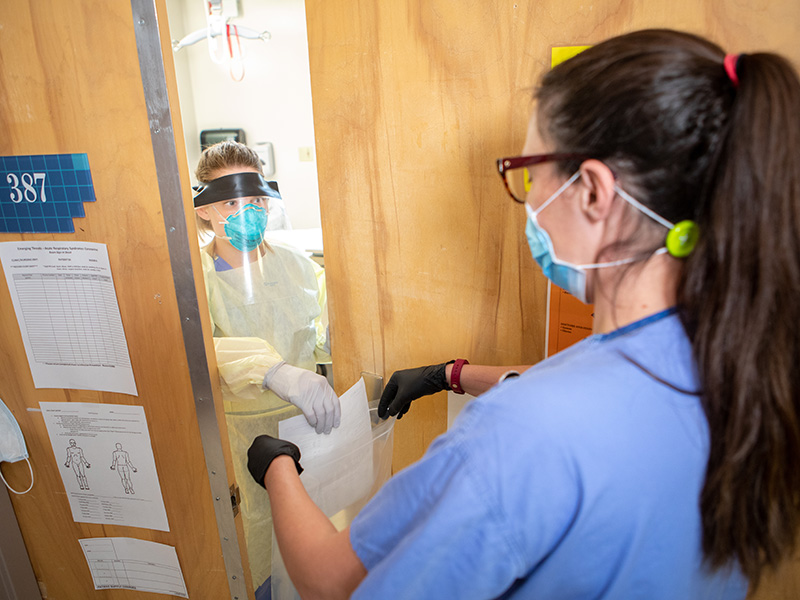In order to take care of others, you need to take care of yourself.
That’s the message Dr. Jeffrey Leichter, Sanford Health lead behavioral health integration administrator, and Dr. Craig Uthe, Sanford Health medical director of professional well-being, have been telling health care workers since the pandemic started.
Presenting to front-line workers
At the very beginning of the pandemic, little was known about COVID-19.
This led to lots of questions, and fear, regarding the pandemic. To help ease the worry of front-line staff, Dr. Uthe and Dr. Leichter put together a presentation highlighting the importance of mental health, and what resources Sanford offers.
“We were asked to provide some well-being to an urgent care that was seeing the first patients with COVID, during the first testing at the Pentagon clinics. Their clinic administrator and lead physician asked if we would provide some well-being and reassurance to their staff,” said Dr. Leichter.
Changing with the pandemic
Since March, over 4,000 employees have heard their message. In that time, more information has become available and more changes have come as a result.
Because of this, Dr. Leichter and Dr. Uthe have shifted their focus and content.
“The first version had focused on how to take care of yourself physically and emotionally during the crisis. Now, the updated version is more oriented towards emerging from the crisis,” said Dr. Uthe.
“How are we going to bounce forward from this? What are the things that might be obstacles to our physical and emotional well-being as we attempt to emerge from the pandemic?”
Why it’s needed
Along with Dr. Uthe and Dr. Leichter, other experts at Sanford Health have highlighted the need for these services, especially during this time.
“The CDC published a study roughly 30 days ago, surveying American adults. It offered a snapshot into the nation’s mental health at this time, compared to the same time last year,” said Dr. Leichter.
“What we’re finding is that anxiety complaints have risen by 300%. Depression has risen 400%. And, one of the most striking pieces of data to come out of the study was that nearly 11% of American adults said they had seriously considered suicide in the last 30 days.
Dr. Uthe says health care workers have historically been susceptible to mental health concerns, due to the demands of the job.
“You have to cover a need 24 hours a day, seven days a week. There’s physical demands for this job that requires people to be present. It’s not an 8-to-5 job. It’s your health,” he said.
And, the pressure and demands have mounted because of the pandemic.
“The responsibility of taking care of someone’s health, regardless of the pandemic, is demanding. Health care workers take care of people, and risk not taking care of themselves.
“In that same CDC survey, 25% admitted to starting to use substances, or increasing the use of substances as a way to cope with the stress that’s gone on during the pandemic,” said Dr. Uthe.
Resources for mental health
While these facts are unsettling, there are ways to find help.
Dr. Leichter and Dr. Uthe say there’s mental health resources at Sanford Health, the national suicide hotline (1-800-273-8255), and the National Alliance on Mental Illness (NAMI).
But, one of the biggest resources we have is each other, they say.
“When we look at research from things like trauma and mass disasters, what we see again and again, is that the people who feel like they’re part of a network have less likelihood of developing a disorder, or some other kind of health problem,” says Dr. Leichter.
“I abhor the term ‘social distancing.’ It’s physical distancing. We want six feet, wear a mask, wash your hands, don’t touch your eyes. Social connectedness is what we want. The last thing we want is social distancing,” said Dr. Uthe.
Learn more
- Help line answers call to support ND medical community
- Health care ‘hero’ is a complicated title, providers say
- Sanford Health creates task force to help prevent suicide
…
Posted In Behavioral Health, Community, COVID-19, People & Culture, Wellness, Workplace Health
